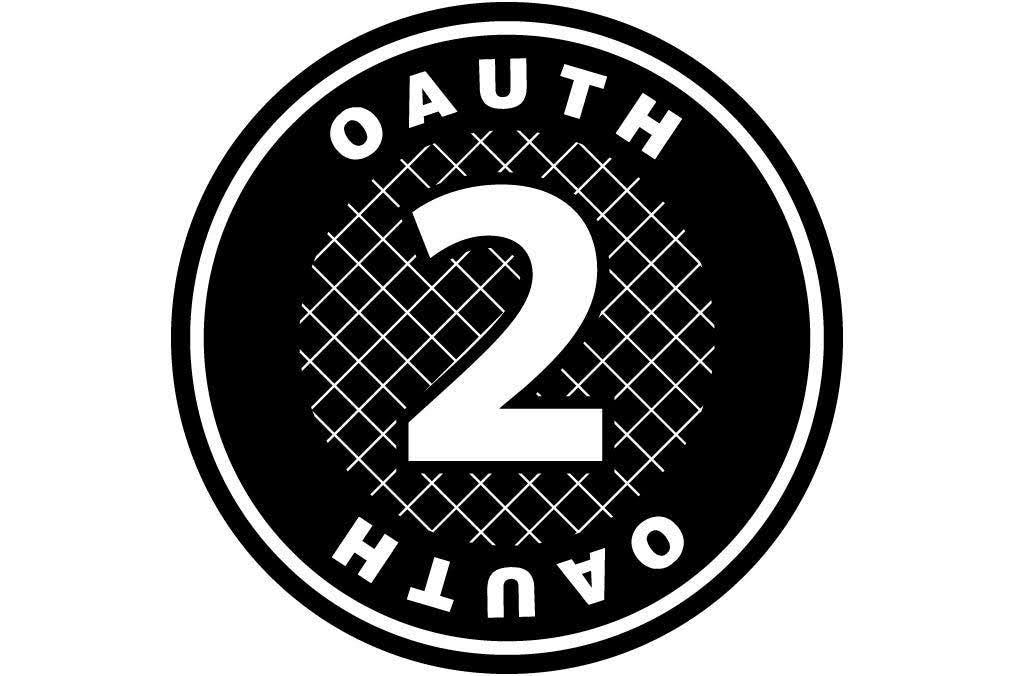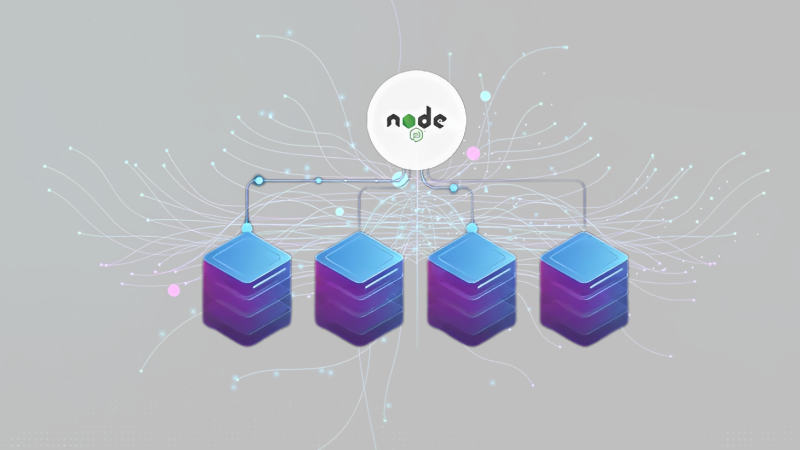A lot of the advantages of the new applications come from the distributed and fine-grained functionalities carried through the microservices architecture. However, the more complex the distribution, the more problems related to security arise. A highly distributed runtime fits well in the case of building microservices, like Node.js, which has become the favorite because of its speed and asynchronous nature. This guide focuses on the top 10 best practices for securing your Node.js microservices, thus ensuring complete defense against potential threats.
Understanding the Challenges in Securing Microservices
Before diving into the best practices, we shall first establish a clear understanding of the security challenges that are inherent to the microservices development services architectures:
- The Increased Attack Surface: For each securing microservice, there is a potential entry point. Therefore, the cumulative attack surface is highly more significant.
- Inter-Microservice Communication: In general, communication among microservices includes sensitive data in transit that needs good encryption and authentication mechanisms.
- Decentralized Management: Management of security policies and configurations should be applied evenly across the diverse independent microservices, which makes management more complex.
- Limited Visibility: Traditional monitoring tools may not be able to provide a holistic view of security across a distributed landscape of microservices.
These are some best practices to mitigate those challenges and manage to build secure, resilient microservice in Node.js.
1. Implement Robust Authentication and Authorization
Authentication checks a particular user’s identity, whereas authorization sorts out their access rights to individual securing microservice resources. Key considerations include:
- JWT (JSON Web Tokens): Lightweight and standardized, JWT is one of the most widely used tools accompanying the wave of user authentication that securing microservice are currently subject to. User information is self-encapsulated within those descript tokens, an appendage of a digital signature to allow transference between services, and verification securely.

- OAuth/OAuth2: In many authorization scenarios that are complex and involve multiple providers, consider utilizing the OAuth/OAuth2 frameworks. These are protocols for safe delegation of user authorization, where the user can grant access to microservices from third-party platforms.

- API Keys and Shared Secrets: If there is any requirement to communicate machine to machine between the microservices, one should consider using API keys or shared secrets. However, either way, it should be taken with caution, and the credentials are rotated well enough.
2. Secure Communication Channels
Securing microservice communicate with each other using several mechanisms. Here is how to ensure secure communication:
- HTTPS with TLS/SSL: Make sure HTTPS is implemented by employing either Transport Layer Security (TLS) or Secure Sockets Layer (SSL) for all traffic between the microservices. It secures data in transit from any eavesdropping and tampering.
- Mutual TLS (m-TLS): This could be implemented to add another layer of security. In m-TLS, the client and server authenticate each other using certificates, hence assuring that the authorization being communicated is received from only the intended services.

3. Leverage API Gateways
API Gateway is the single entry point for external traffic to your microservices. The following are several essential security benefits that come out of them:
- Reduced Attack Surface: Doing so reduces the attack surface of the API Gateway by centralizing access control.
- Rate Limiting and Throttling: The API Gateway should implement rate limiting and throttling to prevent DoS attacks.
- API Key Management: Manage centrally the API Keys in the API gateway with Node.js microservices, thus simplifying the management of credentials and their rotations.
4. Enforce Least Privilege
Microservices need to be kept to the least possible resources they will need to execute the expected functionality, following the principle of least privilege, so that in the case of compromise, the damage can be lessened. PAM solution further enhances this security posture by carefully controlling and monitoring access rights.
- Granular Access Controls: Have within your authorization framework fine-grained access controls. This ensures that microservices can only access specific data and resources to carry out assigned tasks.
- Principle of Segregation: Separate duties by running microservices with minimal privilege, reducing the impact in case one service is compromised.
5. Secure Data Storage and Access
Data security holds prime importance in any application. Here’s how to secure data through your Node.js microservices:
- Encryption at Rest and in Transit: Sensitive data must always be encrypted at rest—in other words, on disk—and in transit during transmission, using robust encryption algorithms. Use industry standards such as AES.
- Control of Data Access: One must implement access controls in the database that do not allow unauthorized folks to get access to the sensitive information by any means. Use role-based access and attribute-based access to make the control more granular.
6. Prioritize Secure Coding Practices
Some of the best practices for secure coding in securing microservice development include the following:
- Input Validation: Validate all user input effectively to prevent attacks such as SQL injection and cross-site scripting. Sanitize all inputs before processing them.
- Error Handling: Strong error handling should be implemented without exposure to sensitive information via error messages. Log errors securely and avoid returning detailed error messages to untrusted clients.
- Regular Code Reviews: Carry out regular code reviews as part of the process of picking out security issues early. Use static code analysis tools to automate some of these checks.
- Secure Dependency Management: Use a dependency manager tool, such as npm or yarn, to handle your microservices. Keep your dependencies current, which involves using the latest security patches to solve known vulnerabilities.
7. Containerization and Orchestration
The containerization technologies using Docker bring several security benefits for microservices:
- Isolation: Containers are isolative linings between microservices to ensure they do not interfere with one another or even with the host system.
- Easy Deployment and Scaling: Microservices’ containerized form allows for rapid deployment and scaling. The fact that it can be deployed itself minimizes security vulnerabilities due to misconfiguration.
- Security-Focused Container Orchestration: Container orchestration platforms such as Kubernetes bring in more security features such as security contexts, network policies, and secrets management, strengthening the security stance of your microservices.
8. Implement Security Monitoring and Logging
Detection and response to security incidents require continuous monitoring and logging.
- Centralized Logging: Implement a centralized logging solution for easier access to microservices’ logs. This can be used to analyze the logs for suspicious activity that could lead to a probable security threat.
- Security Information and Event Management (SIEM): One shall consider adopting a SIEM solution to correlate the logs received from diverse sources, such as microservices, network devices, security tools, etc., to ensure insights for general security events and complex attack pattern identification.
- Intrusion Detection and Prevention Systems (IDS/IPS): Use IDS/IPS to detect and potentially avoid malicious activities in your microservices environment.
9. Foster a Security Culture
Security is not a technical issue; security is a cultural move within your organization. Here’s how you can create a security-conscious culture:
- Security Awareness Training: Ensure regular training or sensitization for developers, operations teams, and, indeed, any other stakeholders toward the best security practices for Node.js microservices.
- DevSecOps Integration: Inculcate consideration regarding security in the development life cycle—testing, reviews, and scanning of vulnerabilities—at every stage of development and deployment.
- Bug Bounty Programs: Running a bug bounty program can motivate external security researchers to find and report the vulnerabilities present in your microservices.
10. Secure Secrets Management
Some of these critical secrets within the life cycle of the microservices are API keys, database credentials, and encryption keys. The following is a way to manage these API control securely microservices:
- Secret Management Tools: Avoid storing secrets directly in your code or configuration files. Instead, use a secret management tool that is tailored for securing and controlling access, as well as rotating them.
- Environment Variables: You can use even environment variables to store the secrets for your microservices. Ensure these environment variables are not printed in the logs or exposed during deployment.
- Regular Rotation of Secrets: Rotate all secrets to reduce as much impact as possible if a compromise arises.
Table: Comparison of Popular Secret Management Tools
| Feature | AWS Secrets Manager | Azure Key Vault | GCP Secret Manager | HashiCorp Vault |
| Cloud Provider Integration | AWS | Azure | GCP | Multi-cloud |
| Key-Value Storage | Yes | Yes | Yes | Yes |
| Secret Rotation | Yes | Yes | Yes | Yes |
| Access Control | IAM Roles | Azure RBAC | IAM Roles | Policies |
| Audit Logging | Yes | Yes | Yes | Yes |
Conclusion
With these top 10 best practices, your Node.js microservices architecture can reach an incomparable security stance. Security is never a one-time fixing; it is a process. Always go through regular reviews of security practices, keep yourself updated with the newly emerging threat landscapes, and upgrade your strategy similarly. Be proactive in designing and developing microservices, ensuring they are resilient and strong in front of a new-age threat landscape in the digital world.
FAQs
1. What are the significant security risks with microservices?
Another advantage of this architecture is that the attack surface is vastly more significant, given that it is distributed. Besides, typically, this style of architecture involves communication between services, where most of the time, the data being sent might be sensitive. But, again, it’s not harmful to repeat the fact that setting up detailed security policies and configurations on every single service is complex.
2. How to secure communication between microservices?
Ensure that you enforce HTTPS with TLS/SSL on all communication. Also, consider the Mutual introduction of TLS (mTLS) for an added layer of security where both services verify each other using certificates.
3. What are some benefits of using an API Gateway for security?
API Gateway acts as a single-entry point. This reduces the attack surface by decreasing the number of endpoints exposed. It also enforces rate limiting and throttling to prevent DoS attacks and provides centralized management for API keys across all the microservices.
4. How can the least privilege principle be applied in Node.js microservices?
Do implement granular access controls within your authorization framework ensuring that microservices access only the particular data and resources required for their operation. Also, execute microservices with the least privileges to lower the level of potential compromise.
5. What are some best practices for securely coding Node.js microservices?
- Validate all user input thoroughly to prevent injection attacks.
- Utilize robust error handling to not reveal error details that could potentially disclose personal information.
- Conduct regular code reviews and apply static code analysis tools to find and fix vulnerabilities.
- Use a dependency management tool to keep dependencies updated with the security patch.
6. How can containerization enhance security for microservices?
Containers have been built from the ground up to isolate microservices from each other and the host system to both prevent interference with each other and to secure intrusions that could introduce vulnerabilities. Kubernetes enhances this out-of-the-box security with features like network policies and secrets management, which you can leverage as additional layers to ensure your workloads.
7. What are some best practices for security monitoring and logging?
Set up centralized logging to gather logs from all microservices. Consider using a SIEM solution that may help correlate logs across other sources to obtain comprehensive visibility of security-related events. Another layer of security that should be deployed is the IDS/IPS systems for detection and, where possible, to prevent malicious activity.
8. How do I promote an information security culture in my organization?
- Periodically, train your teams on best security practices for microservices developed in Node.js.
- Integrate security considerations throughout the SDLC; this shall incorporate security testing, code reviews, and vulnerability scanning.
- Contemplate a bug bounty program to attract external security researchers to look out for and report on vulnerabilities.
9. What are the secure ways for managing secrets in microservices?
- Use secret management tools with functionalities such as dedicated secure storage, access control, and rotation features.
- Consider putting secrets in environment variables—just don’t leave the values of those in logs or anywhere in the deployment.
- Ensure that all secrets are rotated regularly to minimize the effectiveness of a compromise.
10. How often should I perform penetration testing?
Conduct regular penetration testing on your microservices environment, ideally quarterly, or when significant changes are executed on the architecture.
Worker Threads in Node.js: Explore how to utilize worker threads in Node.js to manage CPU-bound operations and improve application scalability.



